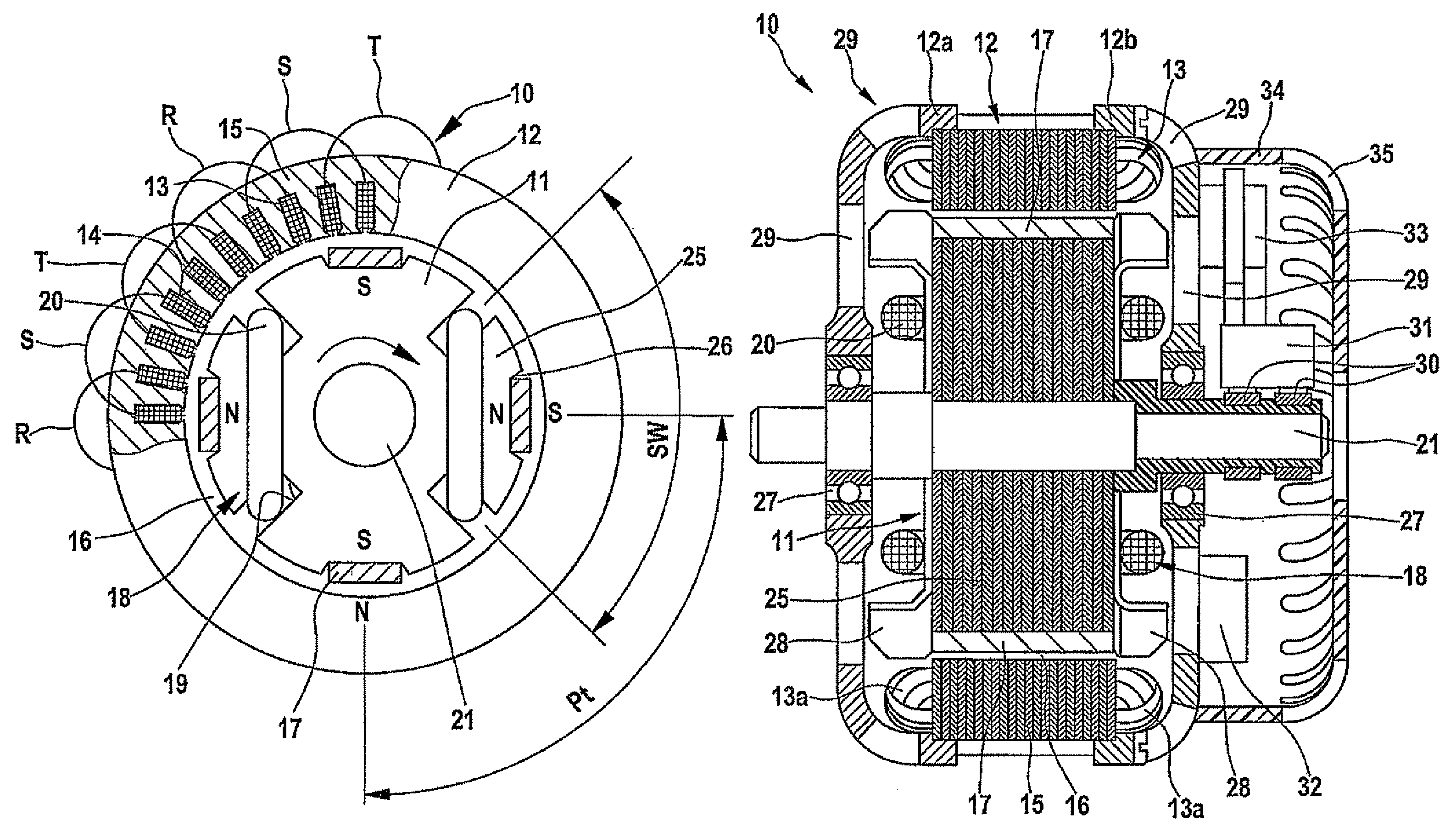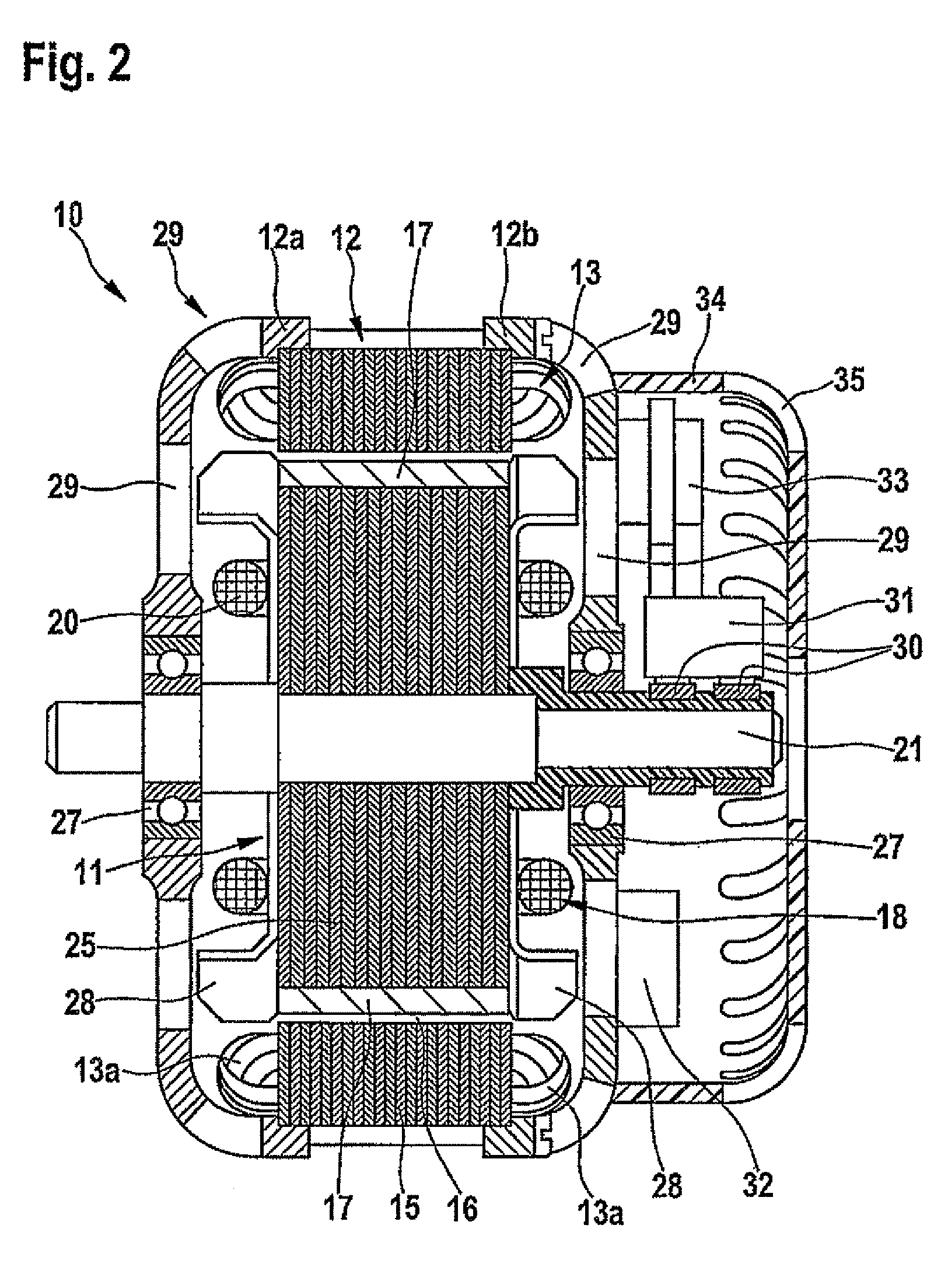Electric machine having a hybrid-excited rotor
a hybrid-excited rotor and electric machine technology, applied in the field of electric machines, can solve the problems of occupying a lot of space on the rotor, requiring plenty of space, and complicating the magnetization of the rotor, so as to reduce the amount of copper, the space needed, and the overall required cross section.
- Summary
- Abstract
- Description
- Claims
- Application Information
AI Technical Summary
Benefits of technology
Problems solved by technology
Method used
Image
Examples
Embodiment Construction
[0025]FIGS. 1 and 2 show an electric machine in simplified form in cross section and longitudinal section, and labeled with reference numeral 10 which, as a synchronous machine, is equipped with a hybrid-excited rotor 11. The machine has a fixed stator 12 which carries a three-phase stator winding 13. In the first exemplary embodiment according to FIGS. 1 through 3, electric machine 10 is a three-phase generator for motor vehicles having a twelve-pole stator winding 13 whose three phase windings R, S, and T are inserted into grooves 14 of a laminated stator core 15 having a coil step size of three grooves and are shown in FIG. 1 across part of the circumference. Stator 12 cooperates, via an operating air gap 16, with rotor 11 which is rotatably supported in stator 12. Rotor 11 has multiple north poles and south poles N and S in a predefined sequence over its circumference, which are formed by permanent magnets 17 and by field coils 18. The number of poles of rotor 11 may be changed ...
PUM
 Login to View More
Login to View More Abstract
Description
Claims
Application Information
 Login to View More
Login to View More - R&D
- Intellectual Property
- Life Sciences
- Materials
- Tech Scout
- Unparalleled Data Quality
- Higher Quality Content
- 60% Fewer Hallucinations
Browse by: Latest US Patents, China's latest patents, Technical Efficacy Thesaurus, Application Domain, Technology Topic, Popular Technical Reports.
© 2025 PatSnap. All rights reserved.Legal|Privacy policy|Modern Slavery Act Transparency Statement|Sitemap|About US| Contact US: help@patsnap.com



